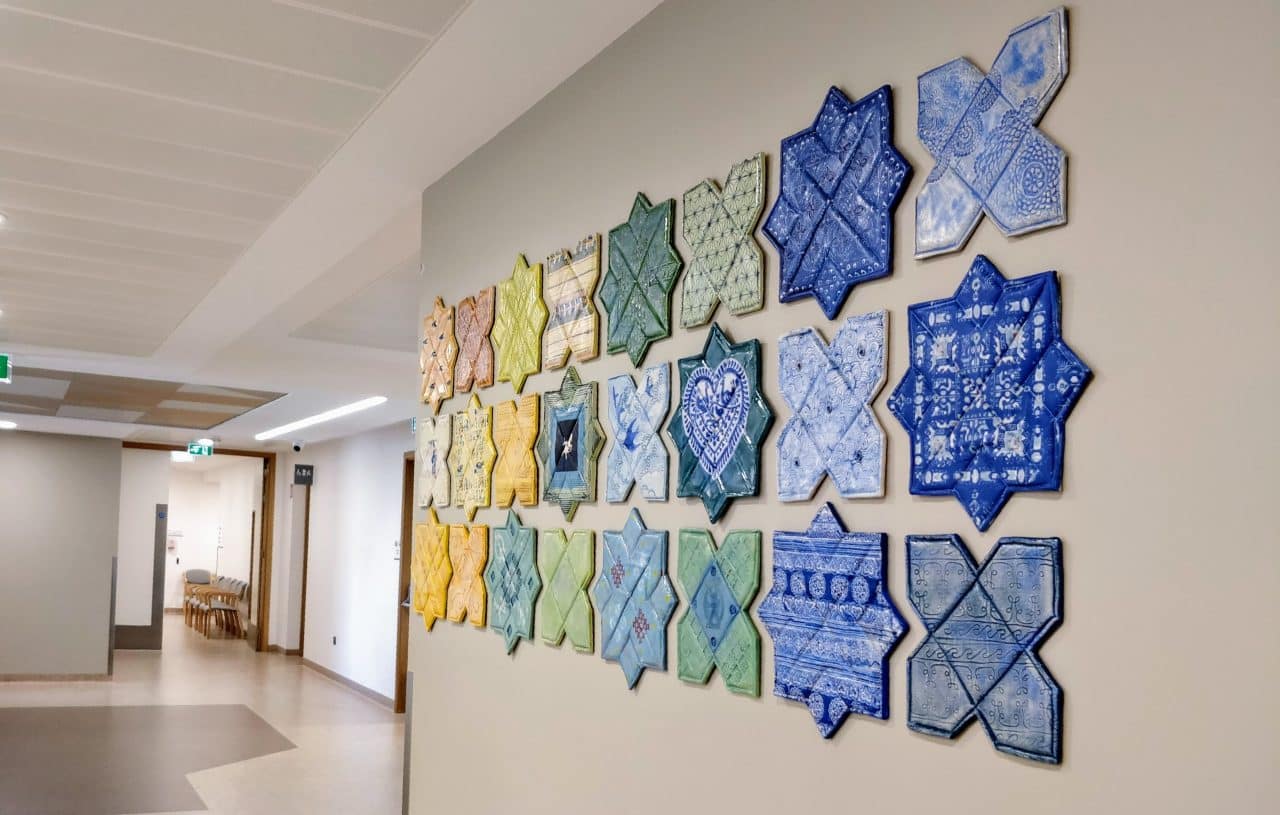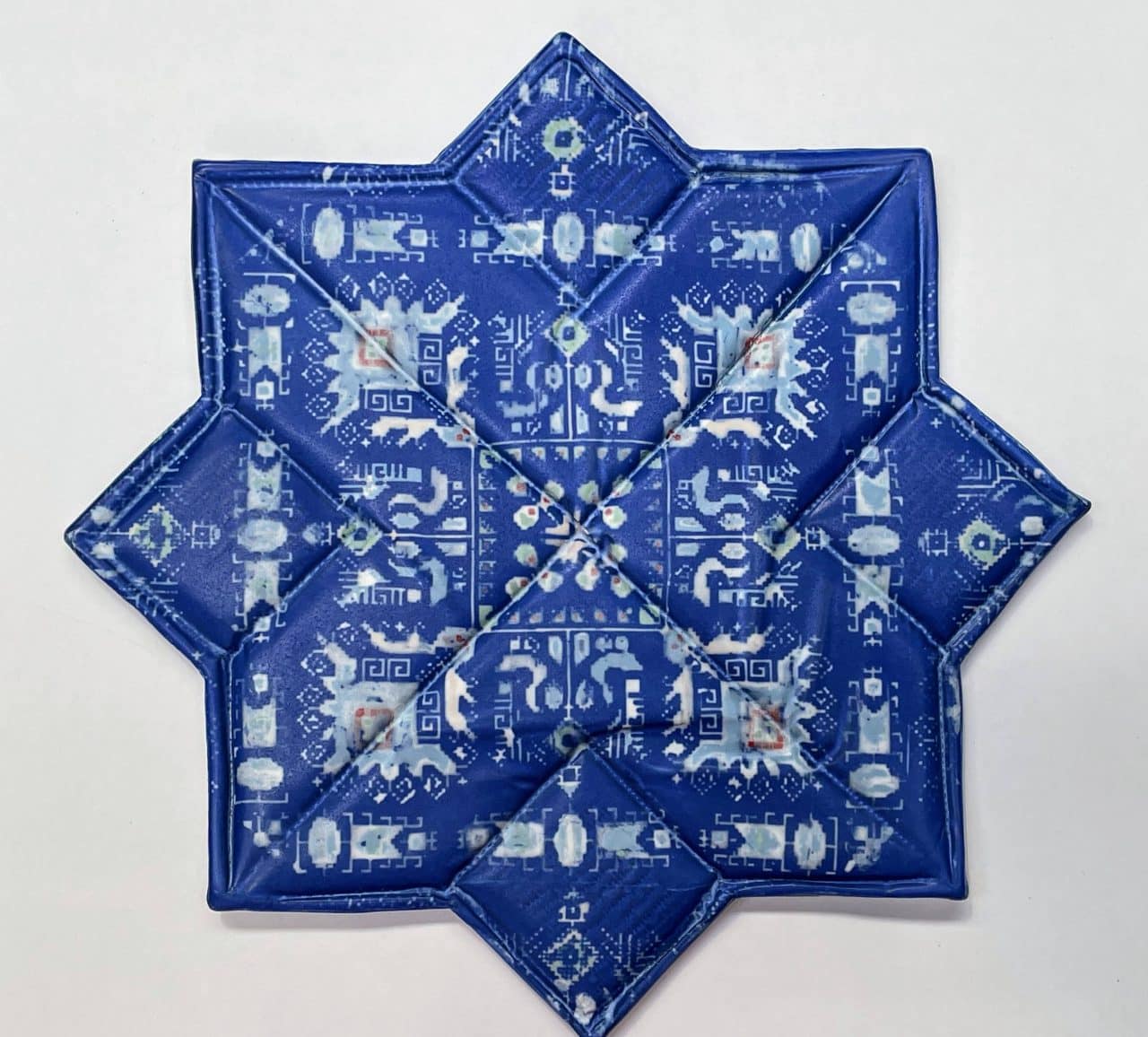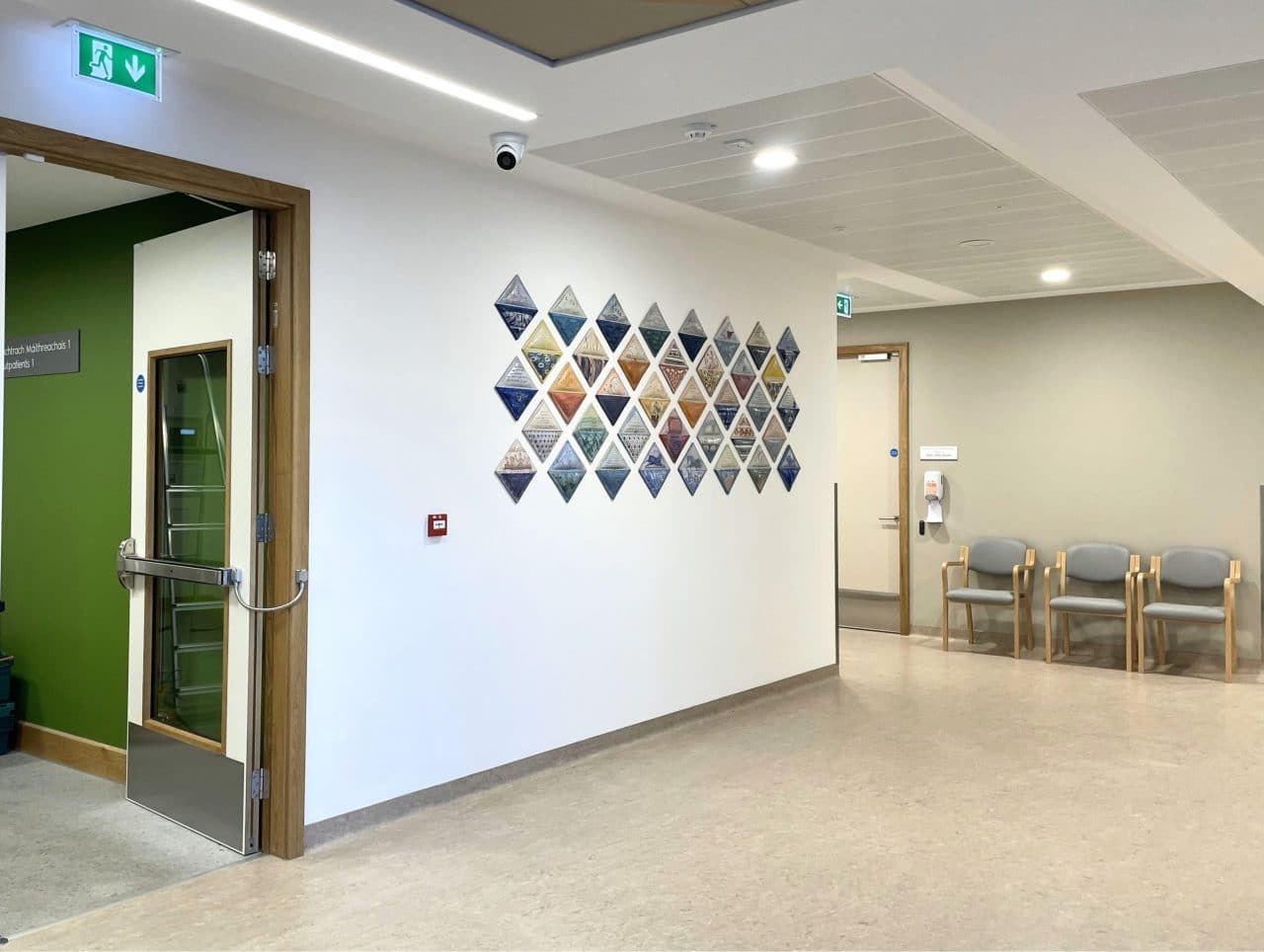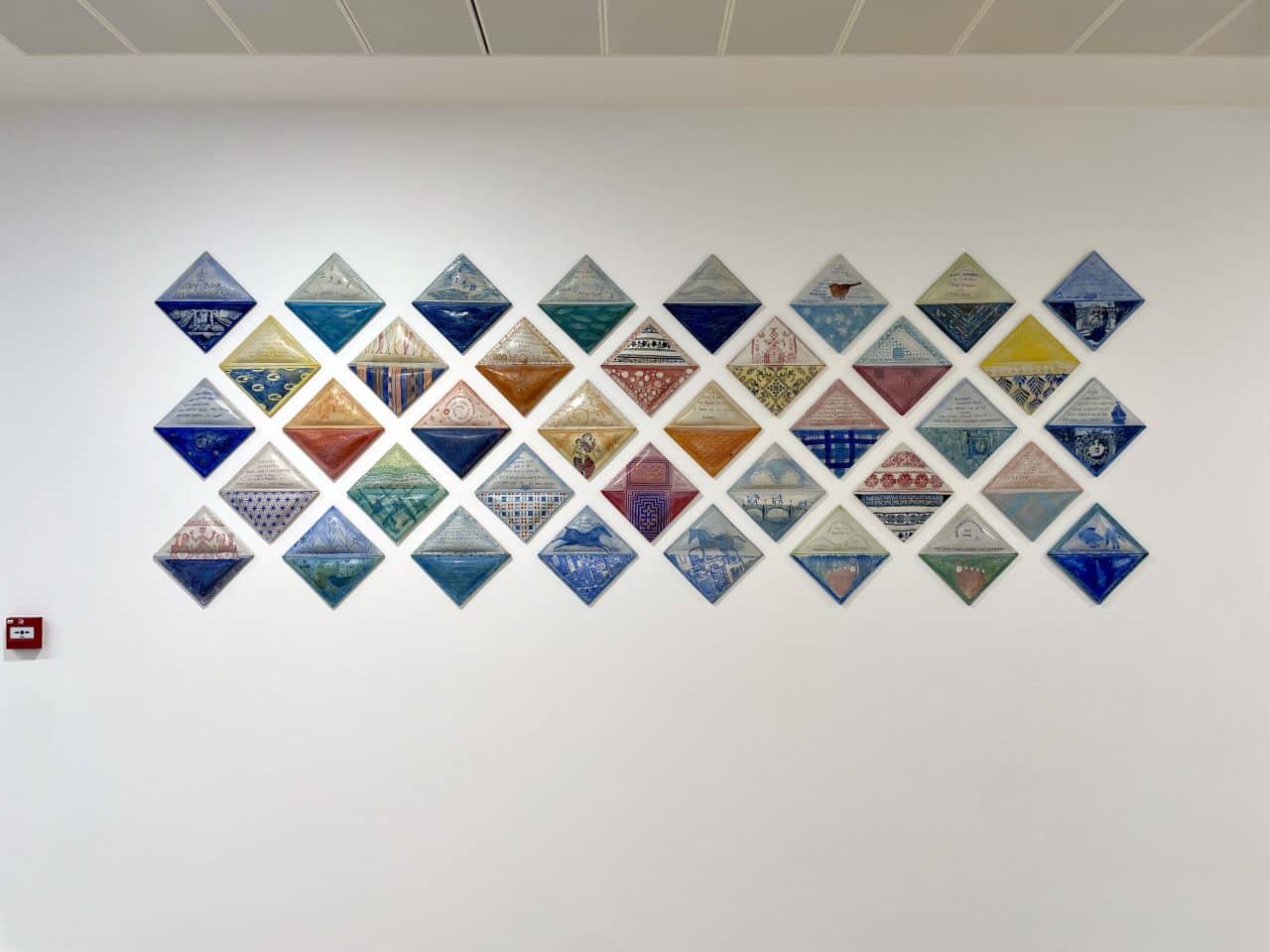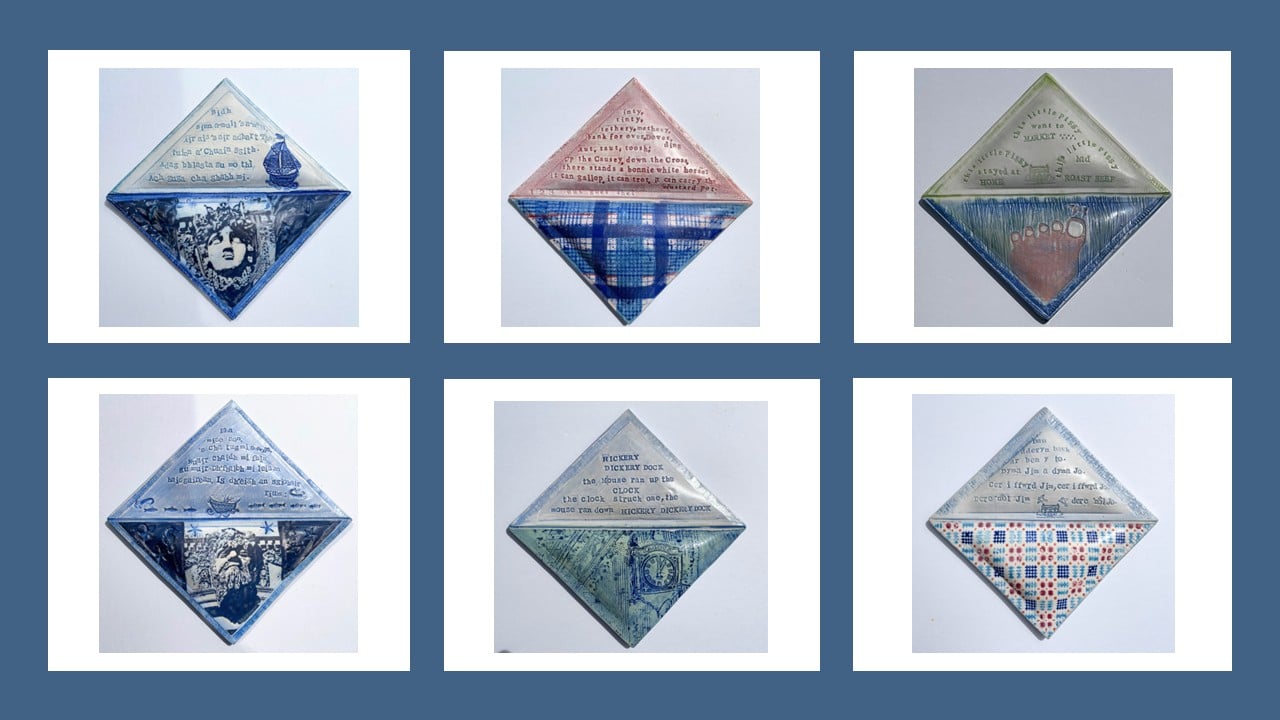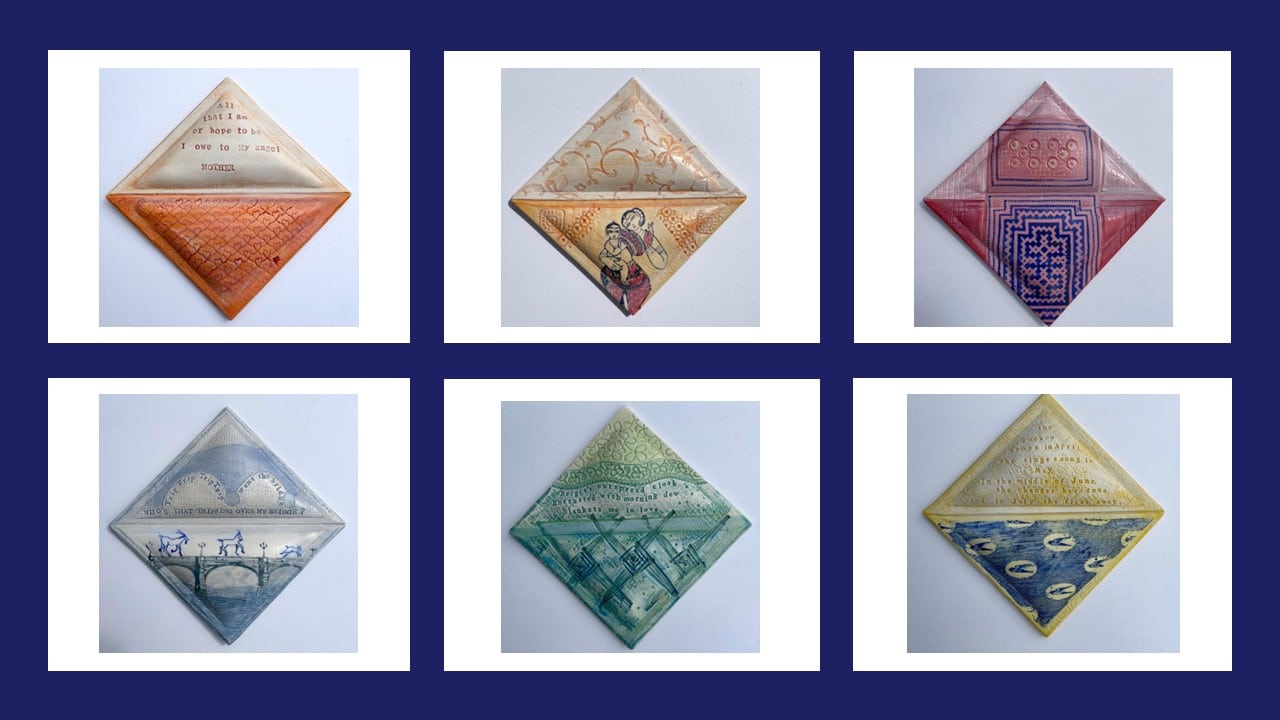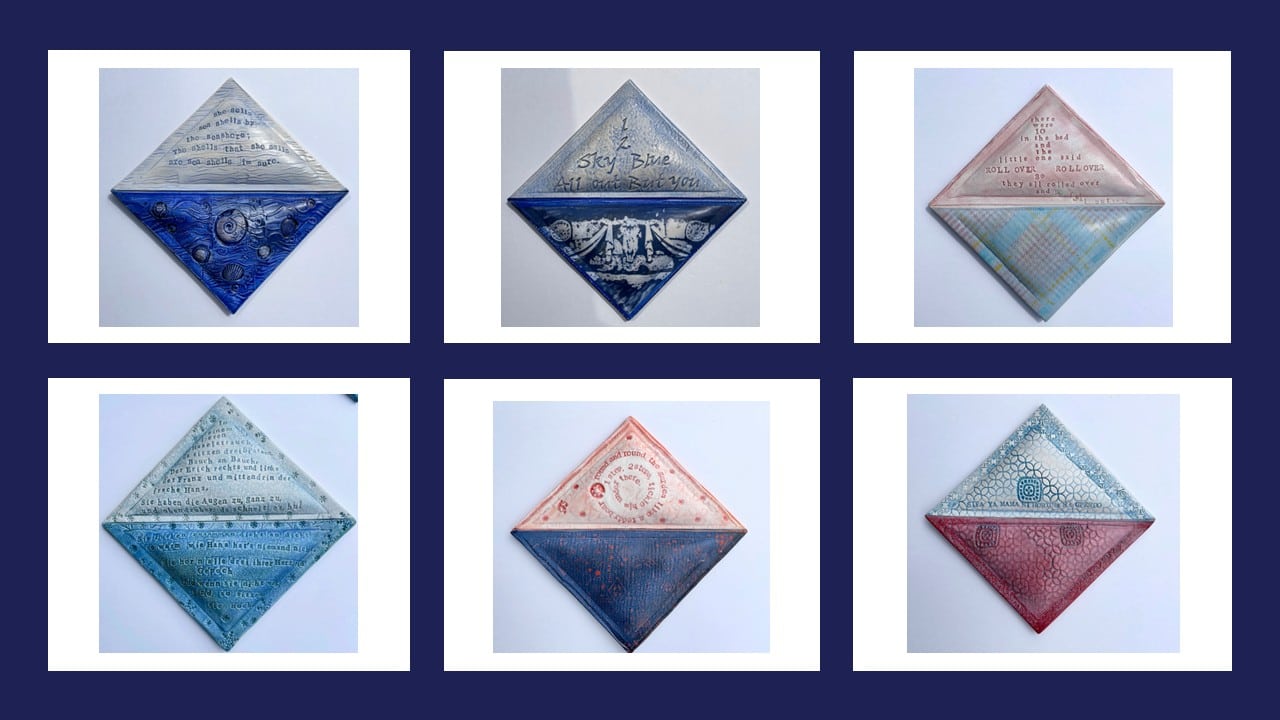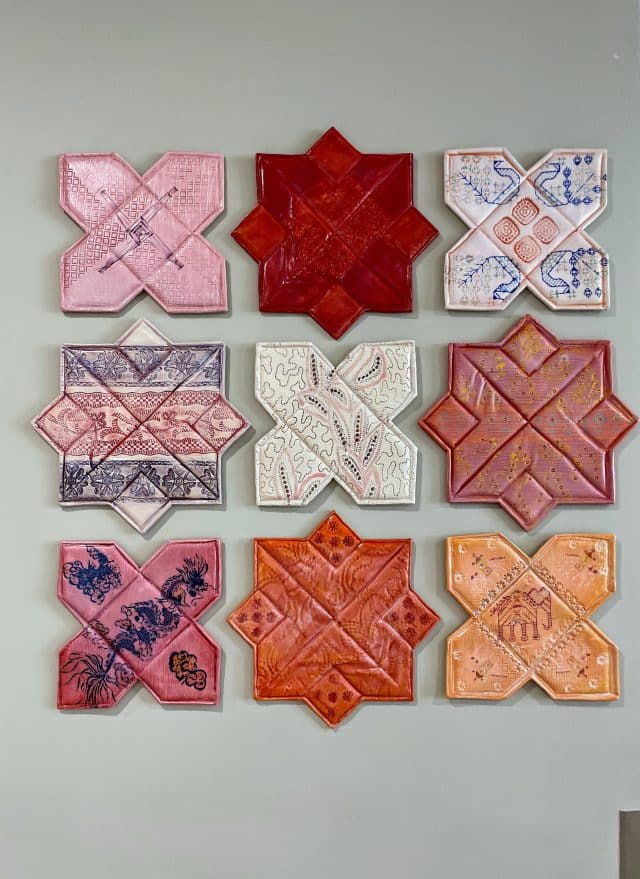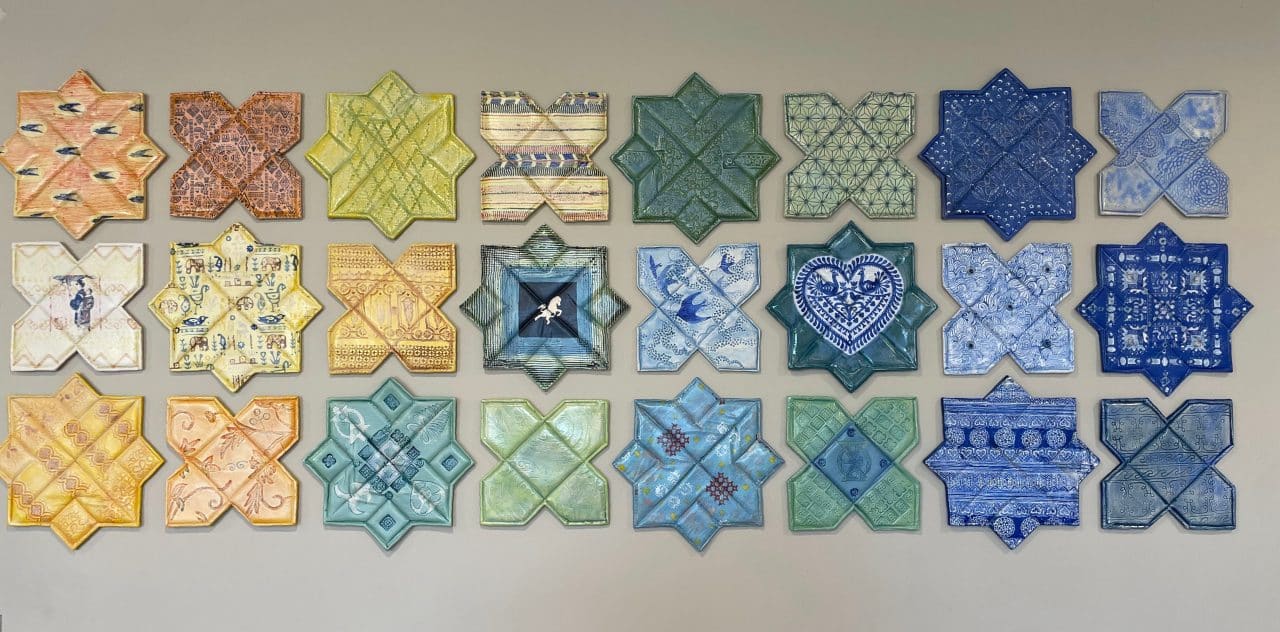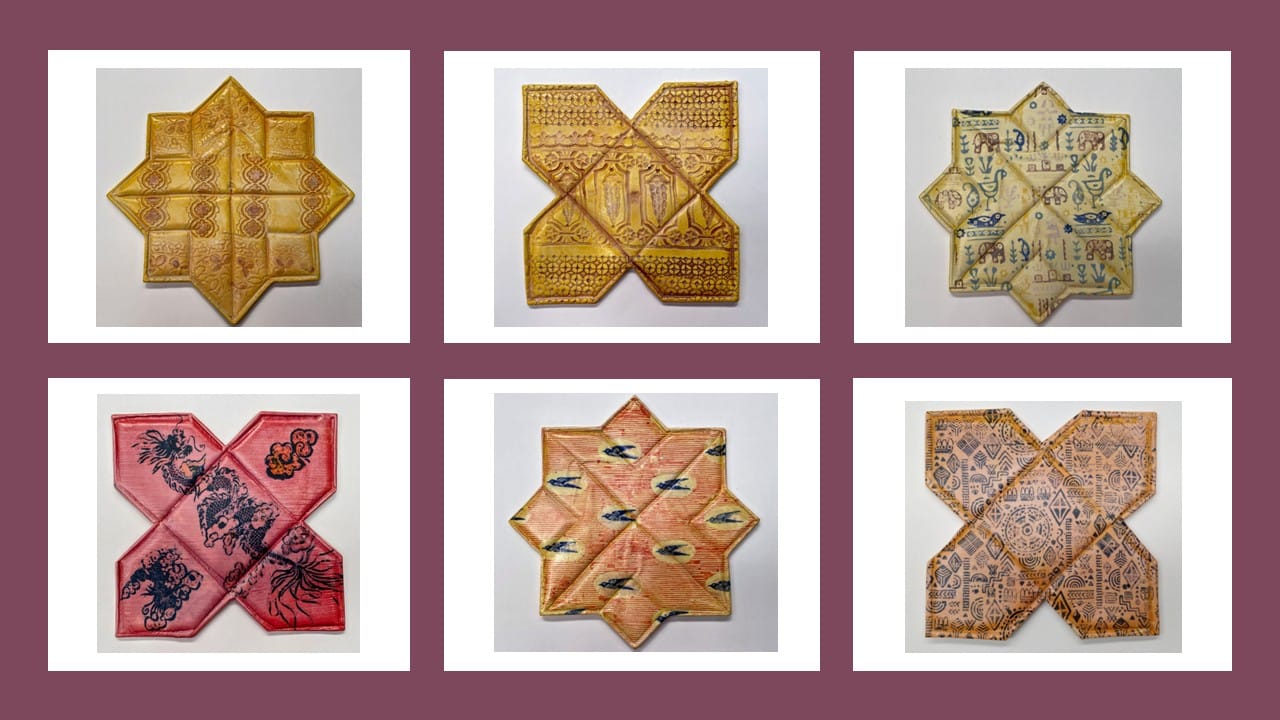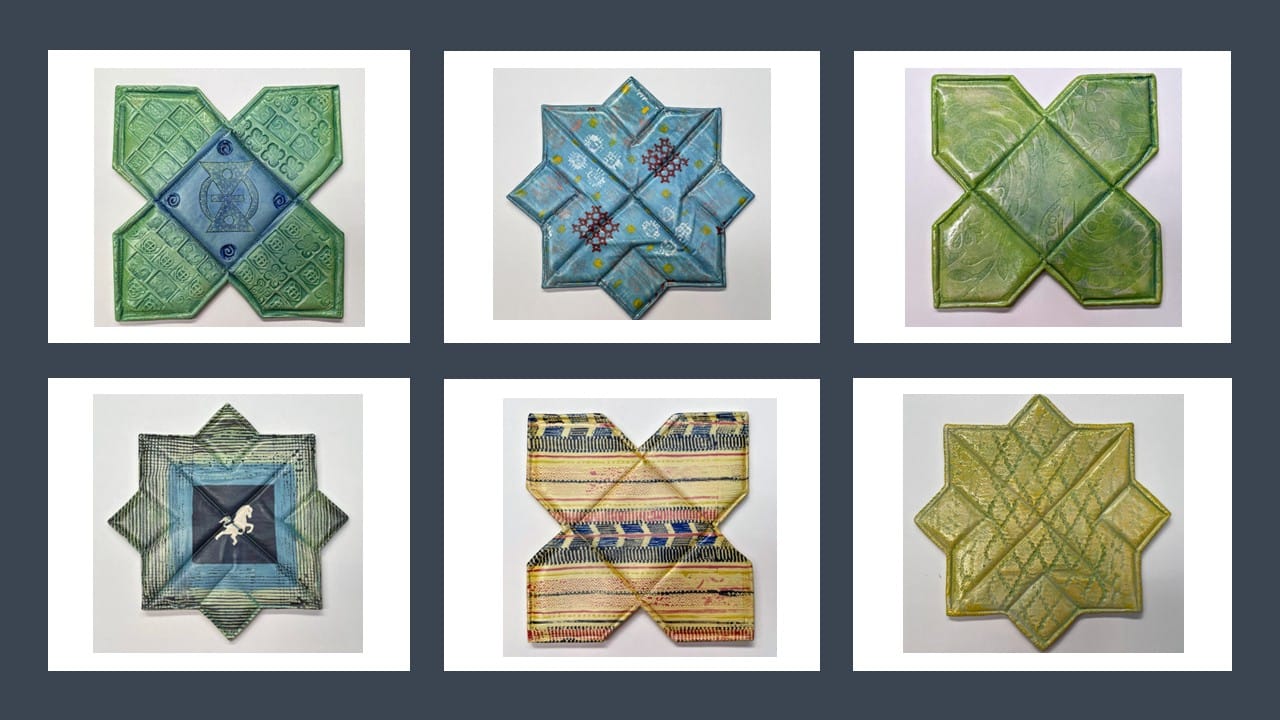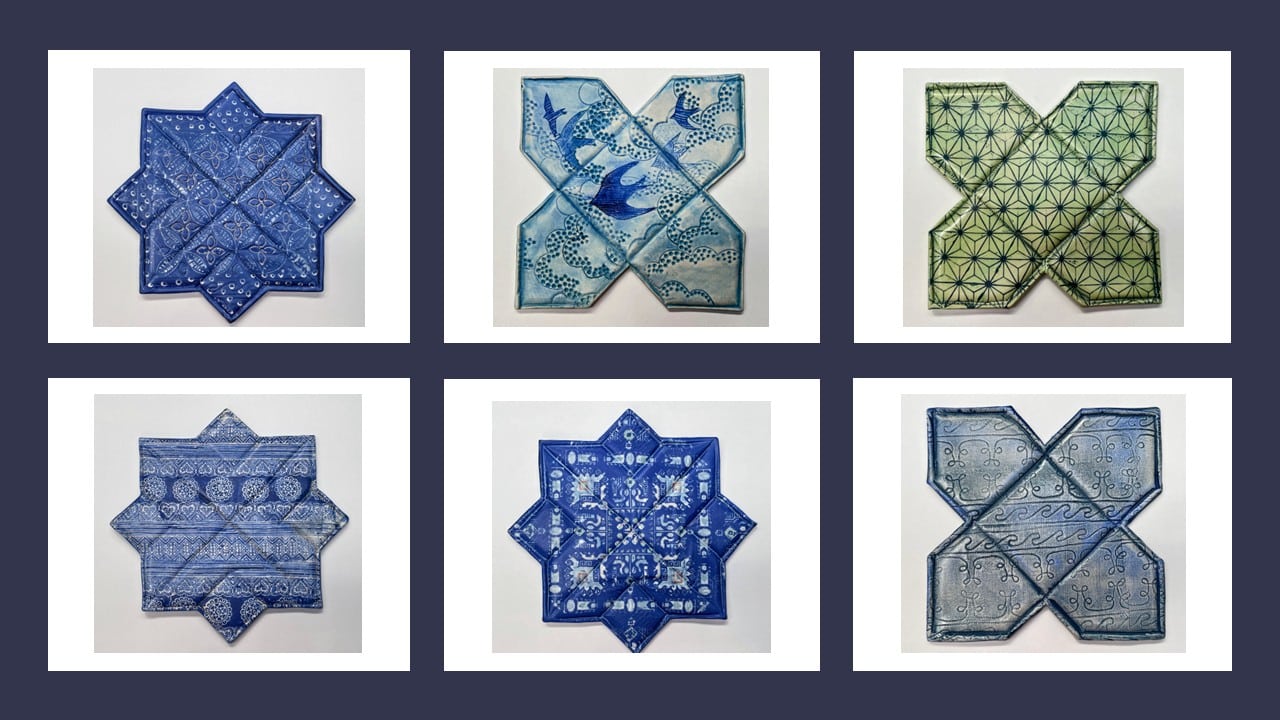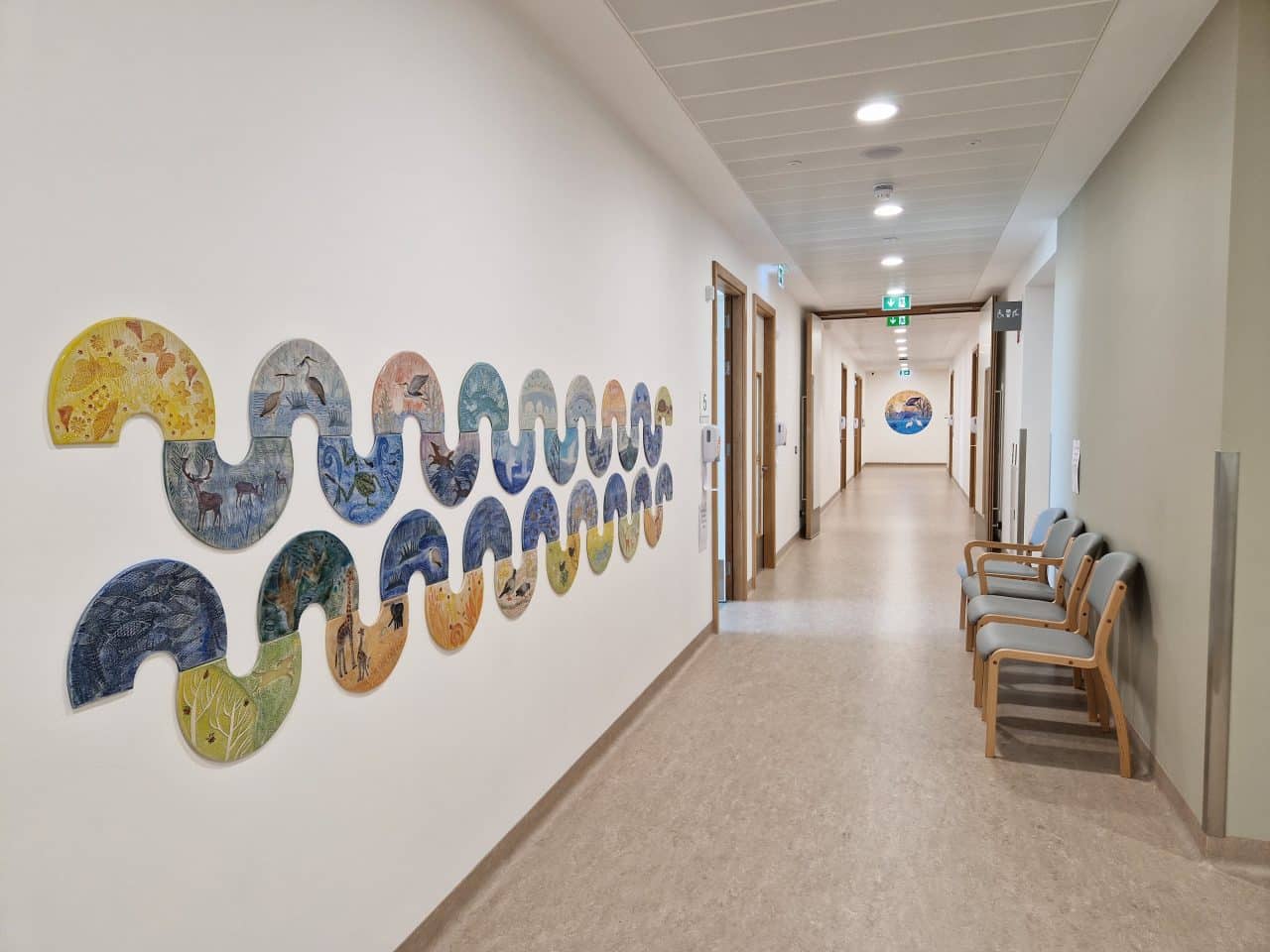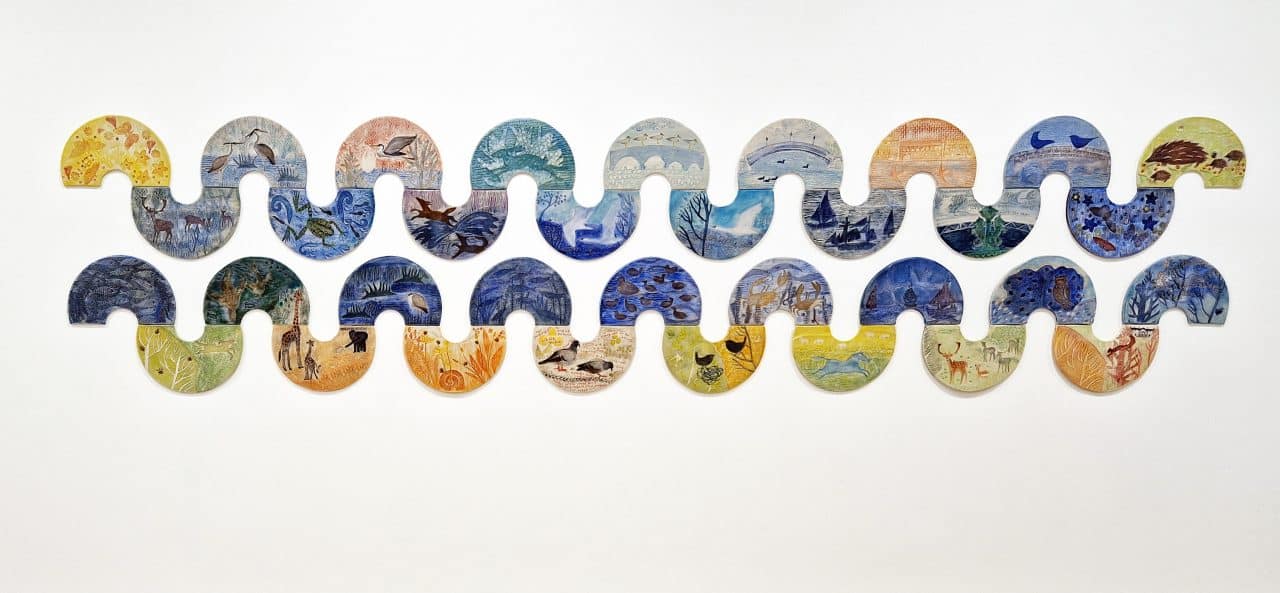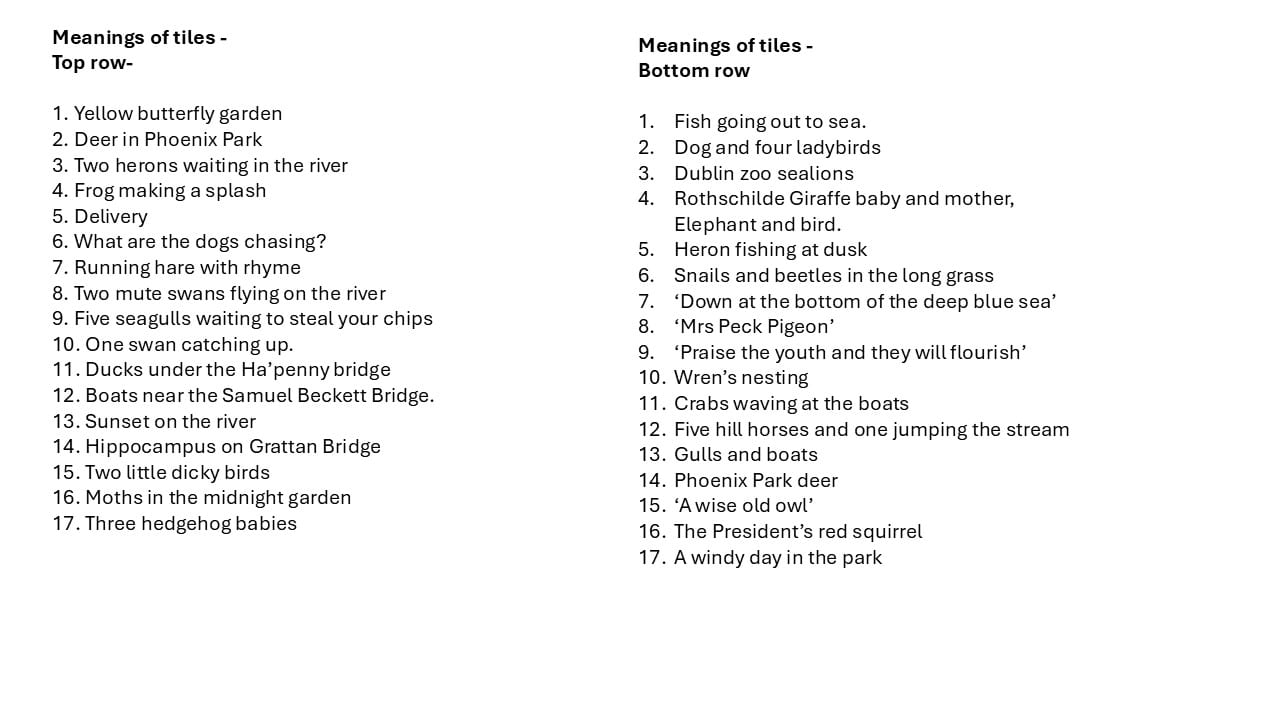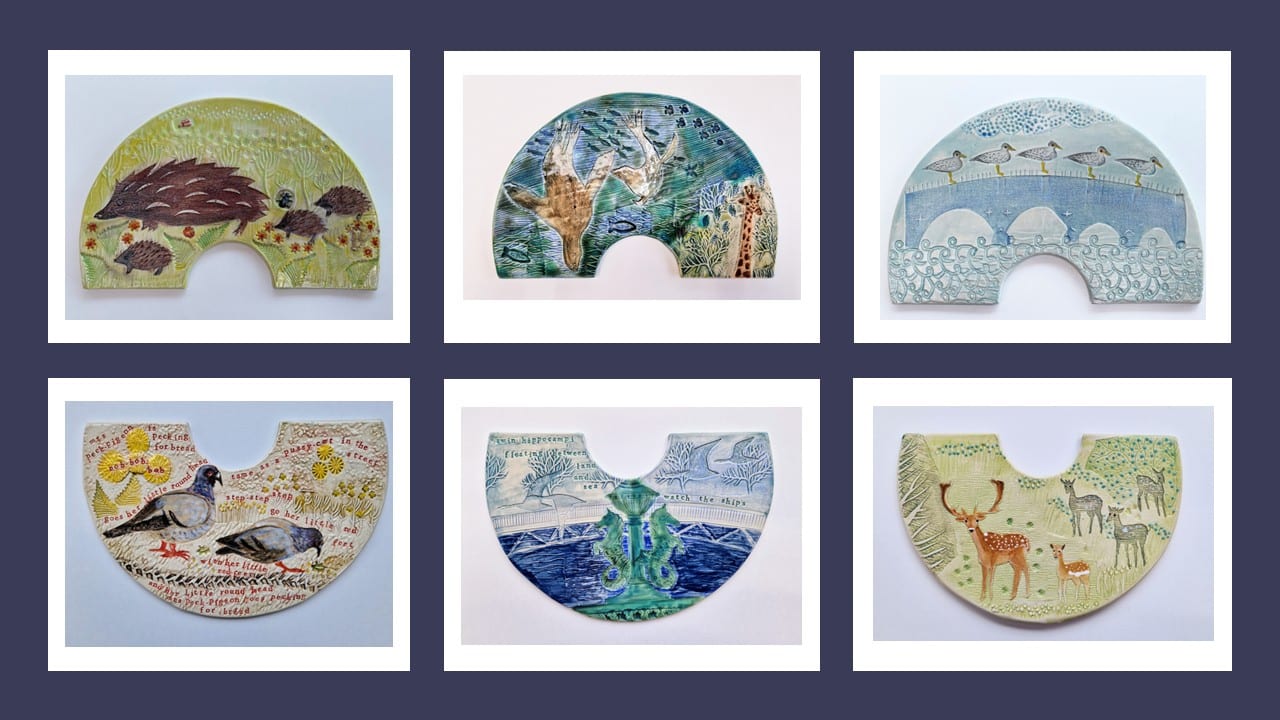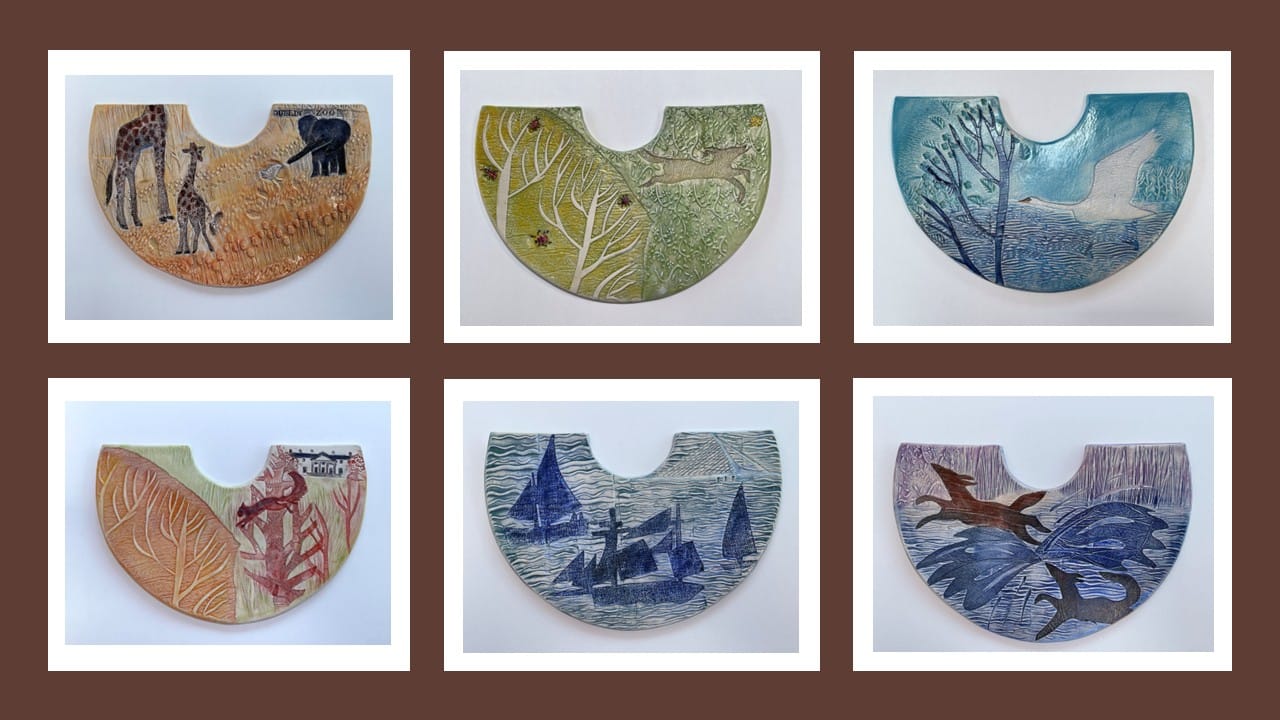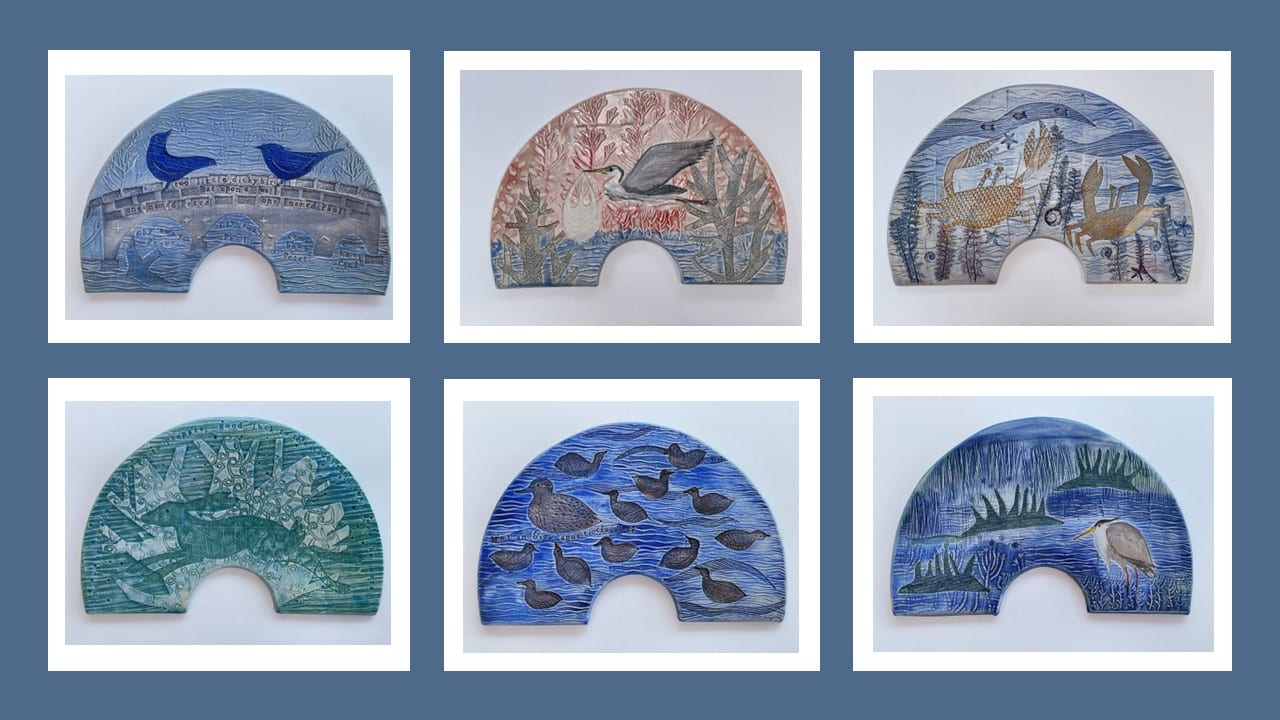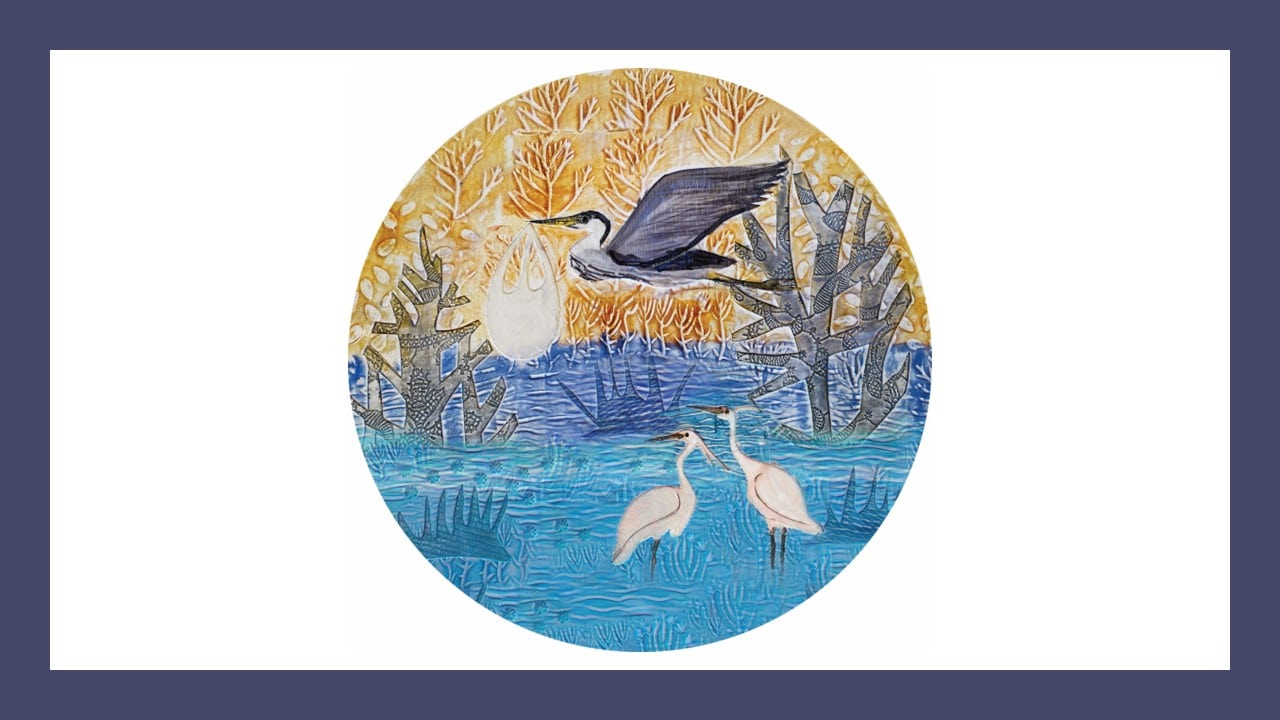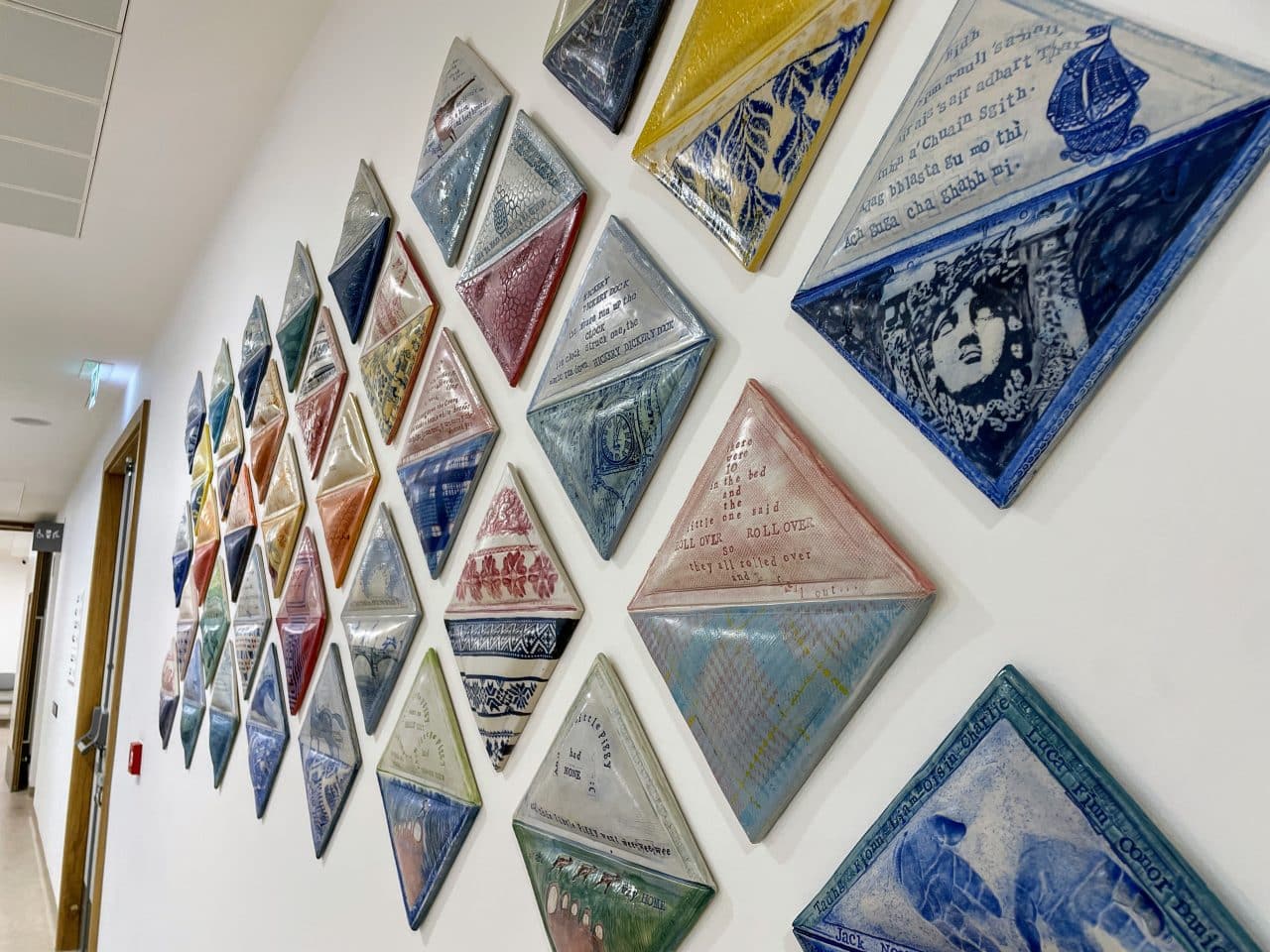
Hampson House – Maternity Outpatients at The Rotunda Hospital, Dublin
Date: 2025
Dimensions: Artwork 1 Weaving Stories – 2.9 x 1.1 m. Artwork 2 Crossing Country– 3 x 0.8 m . Artwork 3 Knitting Together– 3 x 0.8 m.
Materials: Artworks on three floors, printed and textured ceramics.
Techniques: Ceramics – various printing techniques, textured and formed using plaster and hand carved tools and stamps.
Commissioned by: HSE through the Percent for Art Scheme
Location: Floors 1, 2 and 3 of the Hampson House outpatients building, Earl Street Dublin.
Architects: O’Connell Mahon Architects
Description: ‘Weaving Stories’, ‘Crossing Country’ and ‘Knitting Together’ are a group of connected artworks for the newly built Hampson House- an Out Patients Department for the Rotunda Hospital in Dublin. Made in printed ceramics, and vinyl wallcovering, it was commissioned by the HSE through the Percent for Art Scheme and has an artwork on each floor ( 1, 2 and 3).
The new Building is named after Sara Hampson, First Lady Superintendent of the Rotunda Hospital. https://rotunda.ie/history-of-rotunda-hospital/
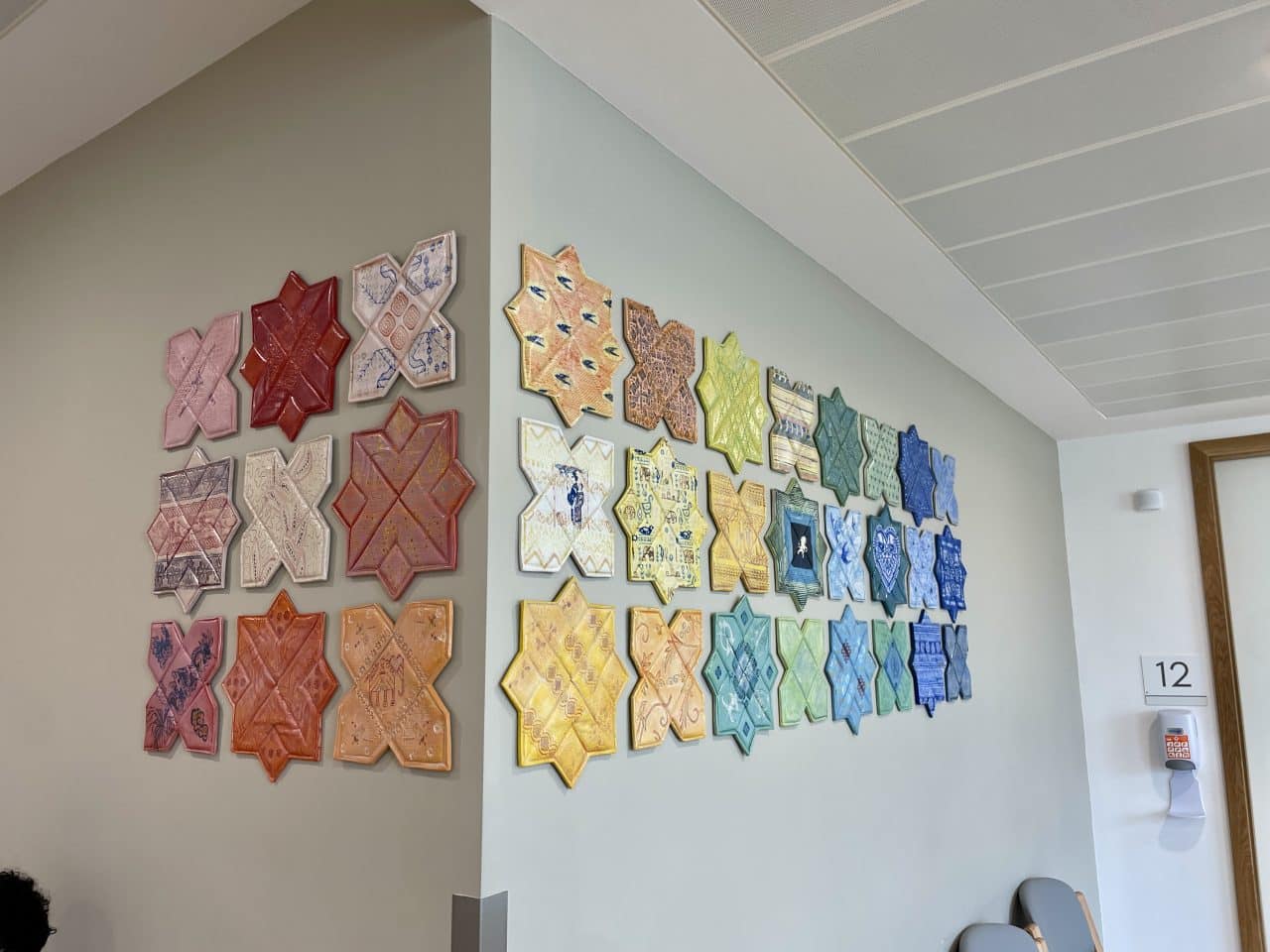
Patterns, poems and quilts-
The dynamics of the population of Dublin have undergone radical changes in the past few years and the city has a multicultural mix of people living and working there. With this in mind, the two artworks on floor 1 and 2, embraces this diverse mix and brings together patterns and poems from around the world, linking them to landmarks in the city. These are recreated onto ceramic surfaces and made to look sewn surfaces through clever use of plaster casting, and tied together in the form of a modern reinvention of the quilt. Each artwork has a number of different tiles placed in a regular pattern with each one evoking a memory, a place, a recollection of a poem or the sound of a song.
Quilts were traditionally made up from remnants of fabrics from other items of clothes worn by family members and have a significance by their ability to recall other people, places and times. We remember who wore the original shirt or skirt and this often brings back fond memories of days out, places visited and people long past. Quilts can be seen as providing a sense of comfort and care as well as a connection to people and places.
To keep the theme of patterns and places, the 3rd artwork depicts the river Liffey in a series of flat semicircular tiles with printed and textured surfaces arranged to evoke a pattern of knitted rows. A printed circular vinyl, taken from the ceramic surfaces on the tiles, draws the eye down the corridor and links to an image from the Rotunda building.
Knitting and crochet are a tradition that has been recently revived with the popularity of yarn bombing and knitting and crochet groups. The coming together of people to make and socialise has long been recognised as both good for mental health and, as well as creatively important, to enable us to learn from each other.
Knitted garments have been made in Ireland since the 16th century, and crochet was introduced to Ireland in the 1700s by Ursuline nuns from France. When the Irish Potato Famine came, many women began crocheting lace items at home to sell as a source of income. Knitting has been a craft that evolved into a modern industry from Donegal wools and Aran patterns to contemporary designer knits.
The relevance for this location- This artwork provides a colourful and tactile embellishment to the walls of the unit which connects to the patterns both in quilts and knitting/crochet and to the historic area surrounding the hospital. It is designed and made so that it is robust, can be easily cleaned and is relevant to both staff, visitors and patients.
Pattern, images and wording were researched before making began with agreement from the Public Art Working Group.
Artwork 1 ‘ Weaving Stories’ on the first floor has 36 different diamond shaped tiles ( two rectangles face to face), placed in a regular pattern to resemble a quilt. Each one has a significance to a fabric, a song, saying or poem or a building detail.
Artwork 2 ‘ Crossing Country’ on the second floor has 33 different tiles in stars or crosses placed in a row of three and extending around the corner of the waiting area in level 02. Each one has a pattern researched from some of the communities who live in Dublin and has a connection with a fabric traditionally worn or used by women.
Artwork 3 ‘Knitting Together’ on the third floor has 34 semicircular printed tiles placed to resemble two knitted rows. The river, as a heartbeat of the city, is abstracted into two rows of curved tiles facing each other with images of plants, birds and animals found along the water. Two external rows in lighter blues and greens depict mammals, trees, plants and some buildings, and several tiles have poetry, nursery rhymes, and sayings that tie in with some landmarks along the river.


